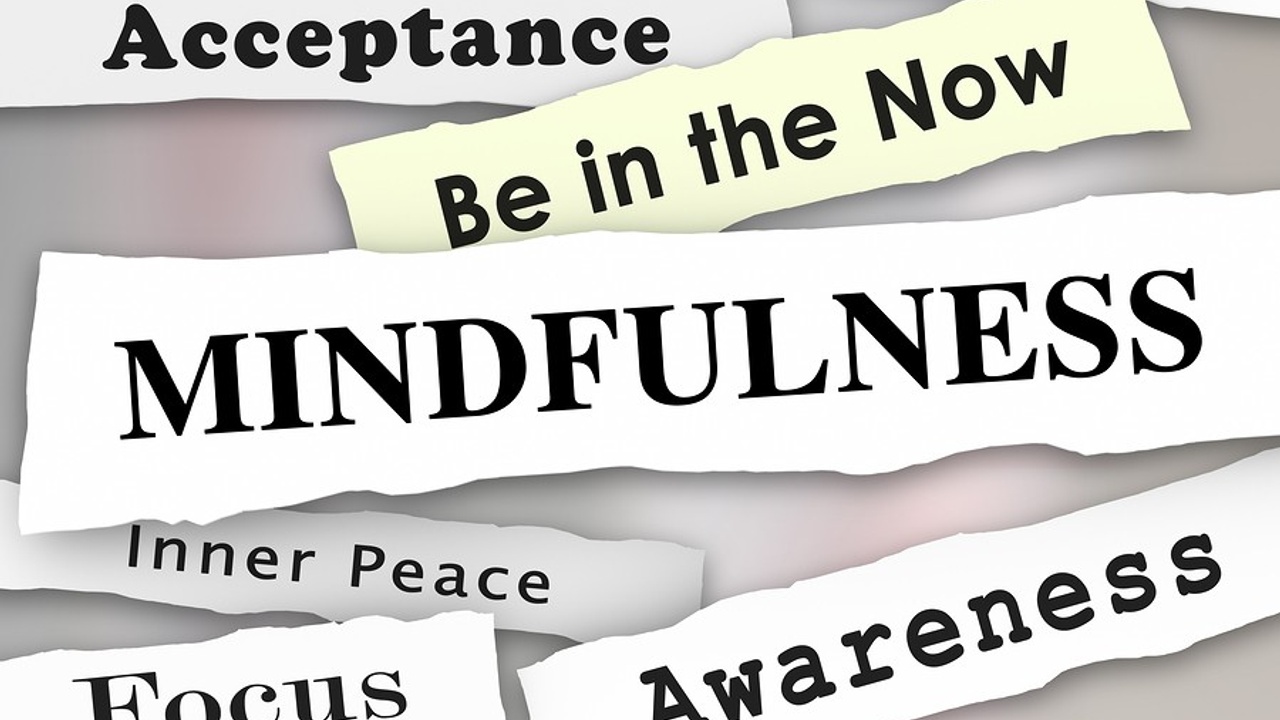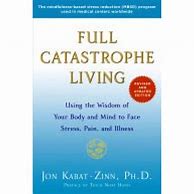5 Lessons from the Mindfulness-Based Stress Reduction (MBSR) Course
Mar 27, 2019
Do you. . .
Want to reduce your stress and increase your happiness? Crave a slower pace of life with time to relax and breathe? Suffer from chronic pain, anxiety, depression or disturbed sleep?
If you answered yes, Mindfulness-Based Stress Reduction, or MBSR, may be for you!
MBSR is an in-person or online eight-week course developed by Jon Kabat-Zinn, PhD, professor emeritus at the University of Massachusetts Medical School and founder of the world-renowned Stress Reduction Clinic. When Kabat-Zinn worked with hospital patients who continued to suffer despite excellent medical care, he created the non-secular MBSR program. Drawing from his Buddhist meditation practice, Kabat-Zinn designed a curriculum to help these patients. Research has proven the program to be successful for several health conditions.

I was introduced to MBSR many years ago through my collaborations with the Employee Assistance Program when I worked in corporate health promotion. I have also read--and highly recommend—Kabat-Zinn’s book, Full Catastrophe Living.
Most recently, MBSR re-entered my life while at the Huntsman Cancer Hospital. While undergoing treatment for breast cancer, I started a similar course, but I left the hospital before that course was completed. Upon returning home, I enrolled in a private one-on-one online MBSR course. While completing the course, I learned a lot: below are my top five lessons.
Lesson 1: Embody Mindfulness
Although I had studied MBSR and was “heady” (as my Australian teacher called it) in my understanding of the concepts, I was not “embodying” the material.
As an example, have you ever read a book, maybe my book, and skipped right over the action items at the end of the chapter? You might have read through the questions and activities, and maybe you even reflected on your responses, but you didn’t actually take the time to put pen to paper and clarify your thoughts. This is what I often do.
Clearly, it is relatively easy to learn something. However, it’s much harder to implement the actions required to change your behavior. Although I could talk and write about being mindful and meditating, I wasn’t living it. So, my MBSR teacher held me accountable to make the changes I desired but wasn’t doing on my own.
Lesson 2: Meditation is a Formal Mindfulness Practice
I had never quite understood the difference between mindfulness and meditation. Turns out that mindfulness can be practiced either formally through meditation or informally during everyday activities.
The formal practice of sitting meditation involves being still and observing your thoughts, emotions and sensations. You are not trying to stop your thoughts. Instead, you want to notice them. Avoid getting caught up and taken away by them. For instance, your mind might start thinking about what you are going to have for your next meal. That’s okay: notice that you are having a thought about food, and then refocus your attention on the present moment.
If you are new to mindfulness, you could start with informal practices that you are probably already doing subconsciously. Since informal practices enable you to slow down, you then become aware of the present moment, your environment, and your current activity. Unfortunately, our minds are often miles away from the present moment; this practice helps us to become present again.
Here are some examples of informal practice ideas:
- While showering, feel and enjoy the cascade of warm water flowing over your body
- Before applying lotion, hold it in your hands and take in a deep whiff of the fragrance
- Sit down when you have a sip of your morning coffee or tea and really taste it fully
- When you are outside, stop for a moment, breathe, and take in the beauty around you
- Turn off the radio or TV and become aware of the sounds in your environment
You’ll notice that each of these practices involves one of your body senses. An example of a simple mindfulness practice that I learned was called STOP, which is noted below. While I was in the waiting room before my treatments, I often practiced this in order to keep me grounded in the present. As a result, I was able to control my anxiety about the upcoming radiation session. Here's the STOP practice:
- S - Stop and notice your thoughts
- T - Take a breath
- O - Observe your senses
- P - Proceed with greater awareness
Additionally, here's another practice that helped me to get control of my anxiety. Ask yourself, what are. . .
- Five things you see?
- Four things you feel?
- Three things you hear?
- Two things you taste?
- One thing you smell?
In order to have less anxiety, try the above practices. Next are some more ideas to help you to be present.
Lesson 3: Choose Your Response
“Between stimulus and response there is a space. In that space is our power to choose our response. In our response lies our growth and our freedom.” -Victor E. Frankl
We often operate on autopilot. In other words, something happens—positive or negative—and we respond in a habitually conditioned way without much thought or awareness. For example, when we are stuck in traffic and are going to be late to our appointment, we immediately become frustrated and angry, yelling at the other cars. This causes our heart rate to rise and our muscles to become tense. Not good!
In order to combat this, mindfulness—defined by Kabat-Zinn as “awareness that arises through paying attention, on purpose, in the present moment, non-judgmentally”—provides us with the opportunity to choose a different response. In every moment we are determining how we respond, even though it may not feel like it when we are on automatic pilot. For example, in the traffic jam situation, a stimulus—slow or non-moving traffic—causes an ingrained response—frustration and anger. These responses (frustration and anger), however, are not our only choices in this situation.
Instead, we could select a different reaction. In order to do this, though, we need to be mindful. In other words, we need to realize we are becoming frustrated, angry and tense. When we realize this, we need to pause, connect with the present moment, become aware of our circumstances, and consciously decide how we want to act.
To illustrate, try this: When sitting in your stopped car, first, take a breath and feel the movement of the air within your body. Next, notice the car seat’s pressure on your back and butt. Now, feel your hands on the steering wheel. Hear what is on the radio. Really become aware of the current moment. Then, choose your response. Instead of taking on a negative mental attitude, you might realize that everyone has been in this situation. As you acknowledge this, it might then prompt you to take advantage of the extra time and listen to an uplifting podcast, call a friend or breathe in silence. There is nothing you can do about it anyway, so why get stressed? When taken in perspective, how big of a crisis is this? Will it matter in five days, months or years?
It is also helpful to realize what situations may trigger a negative automatic reaction. For example, for me, technology can easily send me into a downward spiral. When something on the computer isn’t working, my phone is acting up, or I can’t figure out a new appliance, I need to be especially diligent so I can have a strategy to deal with the impending negative emotions. Thus, learn what your triggers are. It'll help you to think about your reactions. (Do you know your triggers?)
Lesson 4: Disconnect from Your Thoughts
Thoughts are only thoughts. They are not you. They can be changed or even diffused. Read on for an example.
One of the most powerful exercises we did in the course was to write down a repetitive worrisome thought that I had. You know the kind: it keeps creeping up and wearing you down, often in the middle of the night.
Just by writing this thought down, I was able to dissociate from it. I could see it was separate from me, that it was not me. When I looked at the words, I reflected on them, and then I noticed my reactions in body and mind. I did this three times.
The first time I completed the exercise, as I read the thought, I felt of jolt of anxiety pulse through my body and experienced myself becoming uptight and distressed. By the last repetition of the exercise, however, I was actually calm and had a curious attitude about the thought. Additionally, I even formulated some ideas about how to move forward and resolve the issue. Thus, by repeating the reflection process, my emotional response decreased.
It was such a simple exercise, but it had a strong impact. Give it a try. First, write down a thought. Then reflect on it. Finally, repeat it three times. Like me, you may be surprised with how your perceptions quickly change and your stress subsides.
Lesson 5: Let it Be!
The two mindfulness principles that I struggle with most are Non-Striving—accepting the present moment without trying to fix it—and Letting Be—avoiding trying to label a current experience as “positive” or “negative.” Rather, we allow what is, without judgement. We accept the moment.
Once we become mindful of the present moment, we might not like it. We might want to change it, to make it more enjoyable and fun. But wanting something different instead of accepting what we have is resistance, and if we resist the present reality, we suffer.
Pain X Resistance = Suffering
It is okay not to be happy and upbeat all the time. It is human to have fluctuating emotions. Although I was originally afraid to let things be as they are, I have found peace by embracing the present moment and whatever it has to offer. I allow myself to be sad. (Sometimes sadness is what I need.) When we acknowledge these emotions and give them appreciation, they often fade. Like many things in life, these feelings just want to be recognized and accepted, and once they are, they disappear, allowing us to be open to more positive emotions.
How are you going to start incorporating mindfulness into your life to reduce your stress?
Interested in mindfulness training?
Check out the certification program at the INLP Center.
Stay connected with news and updates!
Join our mailing list to receive the latest news and updates from me.
Don't worry, your information will not be shared.
We hate SPAM. We will never sell your information, for any reason.

